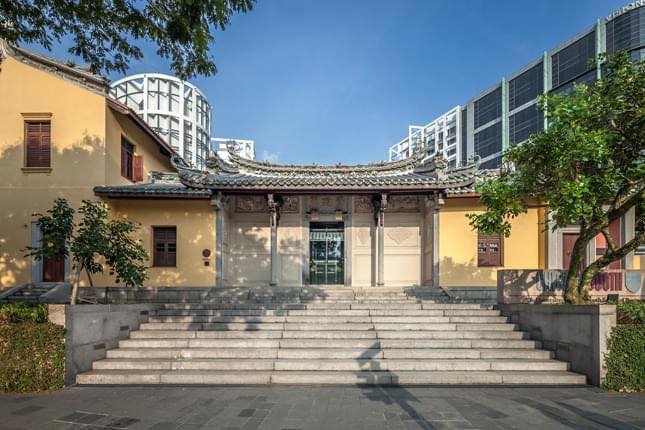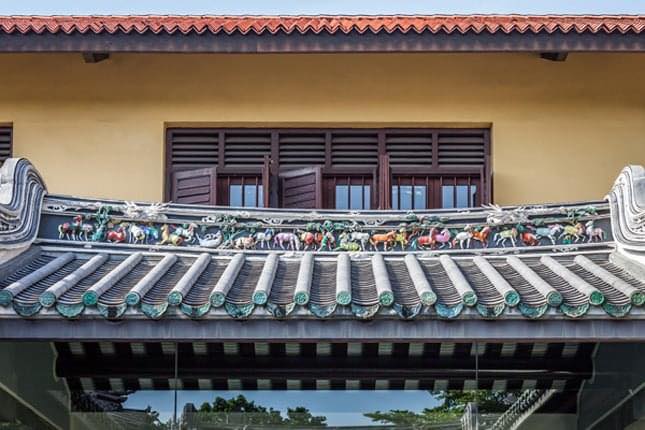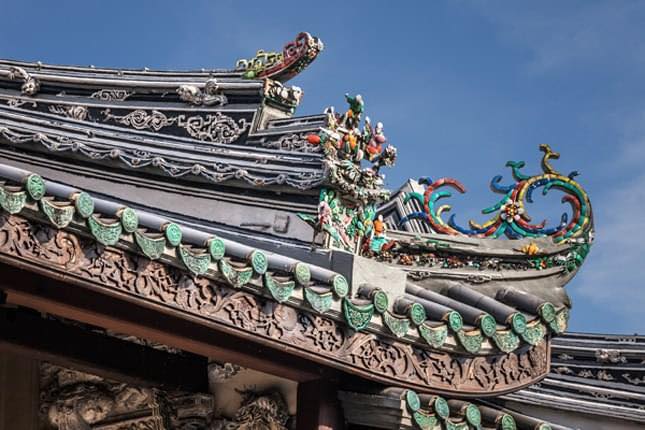House of Tan Yeok Nee (Temple House)
At 101 Penang Road near Istana Park, at the junction of Clemenceau Avenue and Penang Road, sits the only remaining “Four Grand Mansions” built by Teochew towkays (businessmen) in the late-19th century. It was built from 1882 to 1885 by Tan Yeok Nee, then one of the wealthiest Teochew merchants in Singapore, who began as a textile peddler before venturing into pepper and gambier businesses and, later, opium and spirit farms.

The House of Tan Yeok Nee (also known as the Temple House) is an example of traditional Teochew architecture, the courtyard house has almost-straight roof ridges. Its roofs are also ornamented with carvings, paintings, and calligraphy. Many of the motifs on the roof ridges are horses — this is because 1882 was the Year of the Horse according to the Chinese zodiac. Nestled at the junctures between two roofs in the entrance courtyard are koi sculptures. Not only do they adorn the premises, they also serve to drain runoff from the roofs, discharging rainwater from their gaping mouths. But the House isn’t entirely Chinese in design — it also includes European features such as Tuscan order pilasters and French windows in its rear hall.

Between 1999 and 2000, the House went through its last restoration, which involved 100 Chinese craftsmen. All original elements and traditional decorative features of the House were retained and restored. Wood carvings and gold-gildings works were repaired and touched up. The uniquely-shaped gable end walls with their fine artworks and shapes depicting the elements of metal, wood, water, fire, and earth were also restored. At the same time, modern state-of-the-art facilities were carefully integrated into the building’s architecture.

Tan Yeok Nee’s family moved out of the Chinese-style home by 1902, amid construction of the Tank Road Railway Station nearby. After that, over more than a century, the House has seen many occupants. But despite once being known as the Temple House, it has never been used as a temple. Acquired by the British Administration, the estate became the station master’s residence in 1902. About a decade later, the St Mary’s Home and School for Eurasian girls under the Church of England. Later, it housed Salvation Army’s Malayan headquarters from 1939 to minister to the underprivileged, before being used as a storage space by the Japanese army in 1942 during the Japanese Occupation. Between 1951 and 1991, the Salvation Army remained there, until more recently, when it housed the Asian campus of the University of Chicago Graduate School of Business, then a traditional Chinese medicine facility.

Retaining most of its original features and looking almost identical to when it was lived in by Tan Yeok Nee, the House was gazetted a national monument in 1974. A monument to various groups who were committed to the welfare of people here, soon it will change hands again as it was put up for sale this year. #HEREitage Urban Redevelopment Authority
📷: NHB via Roots

